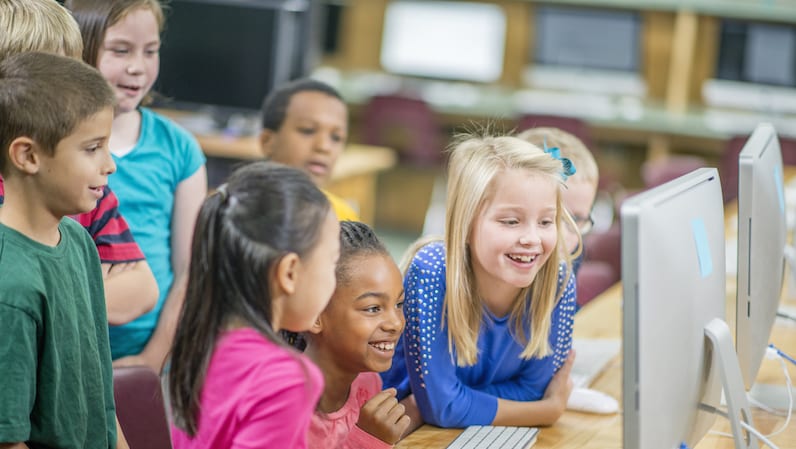Did you check the weather forecast this morning? Or monitor your screen time? Or use an activity tracker? Statistics is the area of math that has the most practical application in our everyday lives. We use data constantly to better understand the world around us and to make important decisions. That’s why teaching students statistics is so vital.
The standards may not require formal statistics instruction until sixth grade, but there’s no reason not to dig into data right away. With a solid foundation in statistics, your students will not only be effective at crunching numbers—they’ll learn a valuable life skill! You’re probably doing a lot already, but here are a few more ideas for teaching students statistics:
Start with counting.
Counting objects is an essential skill in the early grades because one-to-one correspondence is a building block for all future mathematics. Why not have kids create data while they practice counting? In this “Let’s Get the Count Right” lesson from the U.S. Census Bureau, students in K-2 count classmates and markers in an activity that teaches the importance of an accurate count.
Embrace the teachable moment.
Sometimes unplanned lessons are the ones that really stick. Take advantage of your students’ observations as opportunities to collect data. If one of your students notices that someone’s first name has a lot of letters, turn it into a statistics activity. Have your class count the letters in everyone’s first name, create a graph, and describe the data. (This is a great chance to talk about outliers, as some names—like Nathaniel—are especially long.)
Let students formulate their own questions.
Sure, you could graph birthday months as part of your statistics instruction, but you’ll get more buy-in if your students are invested in the results. Ask them what they want to discover. Young students love “favorites,” so if they want to learn their classmates’ preferred types of ice cream, let them have at it. Take whatever’s popular—from Ryan’s World to VSCO girls— and turn it into a data collection activity. They’ll learn the same—if not more—as from a teacher-generated question.
Have students draw conclusions about the data.
Creating a graph is only the beginning. Students not only need to be able to organize the data—they have to be able to interpret it. In this “Immigration Nation” lesson, Students in Grades 3-5 use immigration data from the U.S. Census to make their own bar and line graphs. But, the learning doesn’t stop there. They also have to answer questions about how immigration has changed over time. Go a step further and ask them why they think it’s changed and you have yourself a social studies lesson!
Get students thinking about accuracy.
Ask them why they think they got their results and encourage them to consider what factors might have affected their data. For example, if they looked at what type of shoe was most popular in their classroom, might the season have made a difference? If they investigated another classroom, would the results be the same? This is the perfect time to talk about research limitations.
You can also discuss the implications of inaccuracies in data. For example, what happens if a medical study about heart attacks only includes men? Or what happens if not everyone is counted in the census?
Have students make predictions.
One of the best ways to make statistics real for students is to have them guess what’s going to happen next or make a decision based on the data they’ve collected. Charting the weather allows students to make informed predictions about what to wear tomorrow. Looking at average salaries in various professions can help students determine a path for the future.
Learn more about the importance of the 2020 Census count and empower your students to share the knowledge with adults in their homes by participating:


